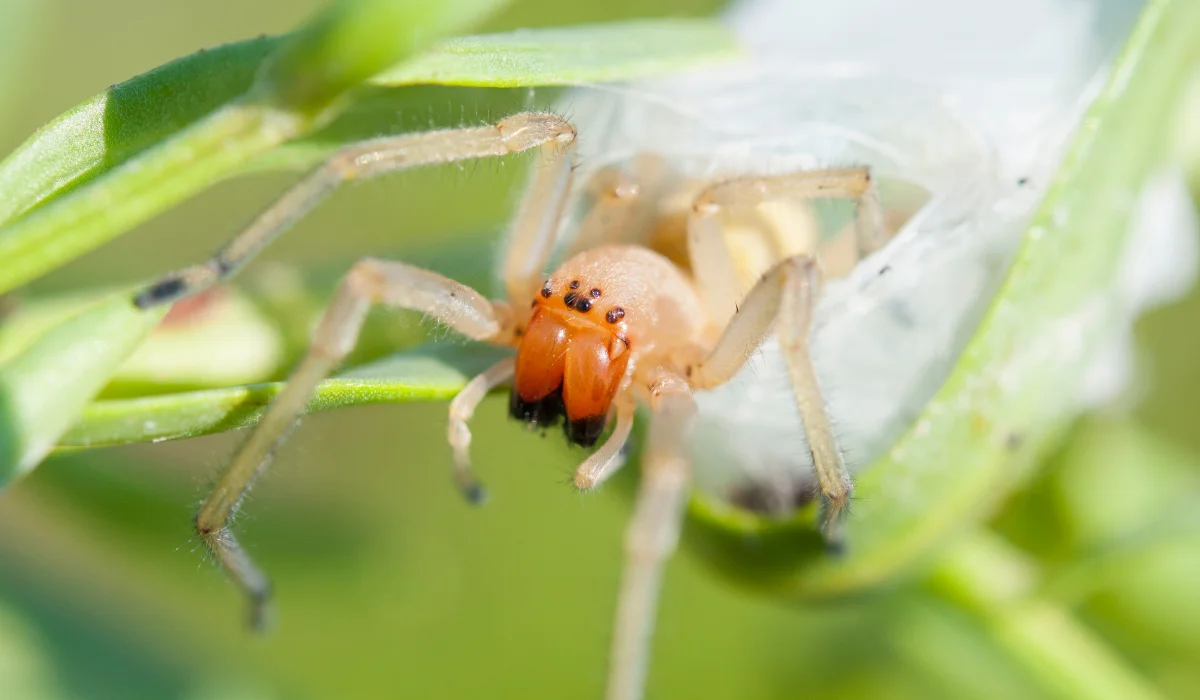
Ever wondered what happens if a yellow sac spider bites you? A bite from this small arachnid can cause localized pain, itching, and sometimes swelling.
While generally not dangerous, these bites can be uncomfortable and may lead to complications if not addressed properly. Read on to learn how to handle a bite and prevent future ones.
Key Takeaways
- Yellow sac spiders can bite, and the effects range from mild discomfort to more serious reactions, depending on the person.
- Yellow sac spider bites look like red bumps and may blister, but they usually heal in about a week unless complications happen.
- Home treatment for bites includes cleaning the area, using a cold compress, and taking pain relievers.
- Prevention involves sealing cracks, reducing clutter, and keeping the home clean to avoid yellow sac spiders.
ARE YELLOW SAC SPIDERS DANGEROUS?
Yellow sac spiders can be of concern due to their painful bites. While bites from these spider species might cause discomfort, the level of danger varies based on the individual’s reaction.
Can Yellow Sac Spider Bites Be Harmful?
Yellow sac spider bites may not always be immediately felt, but they can cause discomfort over time. Initial symptoms may include a red bump and mild pain, which can subside within 24 to 48 hours. Like a bee sting, swelling can last up to a week.
In some cases, individuals may experience a burning sensation, allergic reactions, and a general sense of malaise. If a blister forms and breaks, it may take longer to heal completely.
Although rare, necrosis or necrotic lesions can develop at the bite site. The spider’s venom isn’t as potent as that of more notorious species, but the risk of secondary infection exists.
How Common Are Yellow Sac Spider Bites?
In regions like North America and Europe, yellow sac spiders often enter homes, increasing interaction possibilities. While these spiders may bite defensively, such encounters aren’t overly common. The bites tend to occur more during warmer months when these spiders are more active indoors.
WHAT DO YELLOW SAC SPIDER BITES LOOK LIKE?
The bite of a yellow sac spider often resembles a small, red bump on human skin. This bump might exhibit characteristics like other insect bites, such as those from mosquitoes. A burning sensation or itching can develop at the site, adding to the discomfort.
As the bite progresses, a small blister might form. The blister may be filled with clear fluid, like a blister from a minor burn. Over time, this can lead to an open sore if scratched or irritated. It’s not uncommon for the affected skin to become tender and sensitive to touch.
In contrast to the black widow, hobo spider, or brown recluse spider bite, which can have severe reactions, it is generally less damaging. If healing doesn’t occur or if the reaction worsens, seeking medical attention is recommended.
HOW TO TREAT A YELLOW SAC SPIDER BITE AT HOME
If bitten by a yellow sac spider, immediate action can help manage symptoms at home. Follow these steps to help ease bite symptoms and reduce the risk of complications:
- Clean the bite area with mild soap and water to remove venom from the surface.
- Apply a cool compress to reduce swelling and soothe the skin.
- Elevate the affected limb if possible to reduce swelling.
- Take over-the-counter pain relievers like ibuprofen to ease discomfort or inflammation.
- Avoid scratching the bite to prevent infection.
- Use an antihistamine to reduce itching or redness, especially for those prone to allergic reactions.
- Check the bite for any changes to catch potential complications early.
- If symptoms worsen or if severe reactions occur, medical attention is necessary.
HOW TO PREVENT YELLOW SAC SPIDER BITES
To get rid of yellow sac spiders, here are several proactive steps you can take:
- Seal cracks and crevices using caulk, especially around window sills and doors.
- Declutter basements and storage areas to reduce spider hiding spots.
- Vacuum corners of walls and behind furniture regularly.
- Remove woodpiles and debris around the house.
- Trim yard vegetation touching the structure.
- Reduce outdoor lighting or use light yellow bulbs to reduce insect activity.
- Place sticky traps to capture and safely move spiders found indoors.
- Remove egg sacs or silk sacs to prevent future spiderlings from hatching.
- Clean regularly by dusting to discourage spiders from settling.
- Store items in sealed bins, not cardboard boxes, to deter nesting spiders.
- Contact pest control services if spiders persist despite prevention efforts.
WHEN SHOULD YOU GET EXPERT HELP FOR YELLOW SAC SPIDER PROBLEMS?
If there are frequent spider sightings or large webs, it’s smart to consult a pest control expert. These exterminators can assess risks outside and inside a home and determine the best approach to manage the issue.
Whether you’re in Baton Rouge or New Orleans, seeking expert help should be easy. For immediate intervention for a severe infestation, let Lajaunie’s spider control specialists tailor a solution that’s right for your home.
For more information about our services, visit our service page.